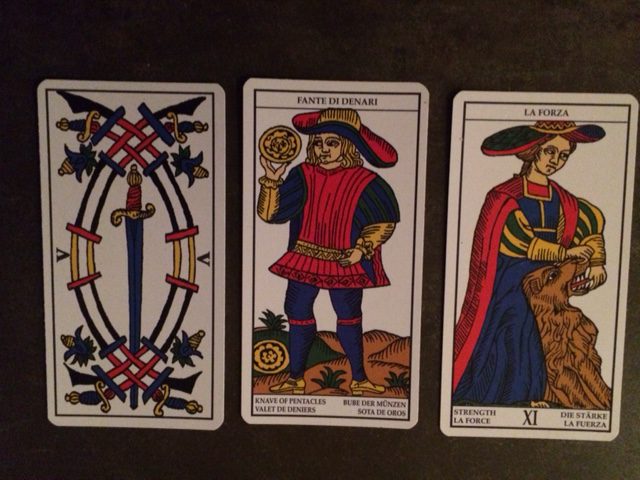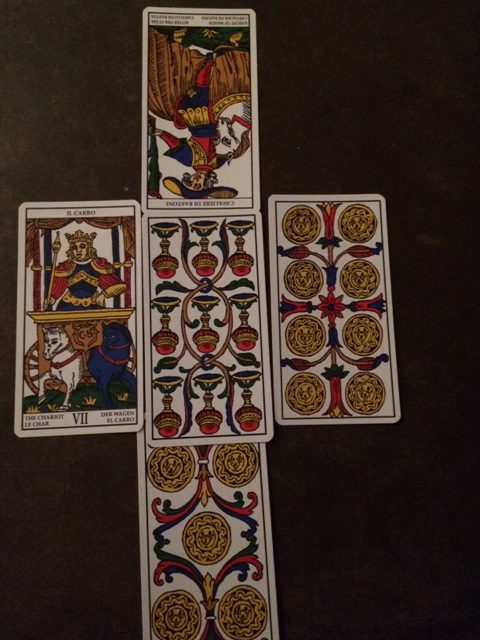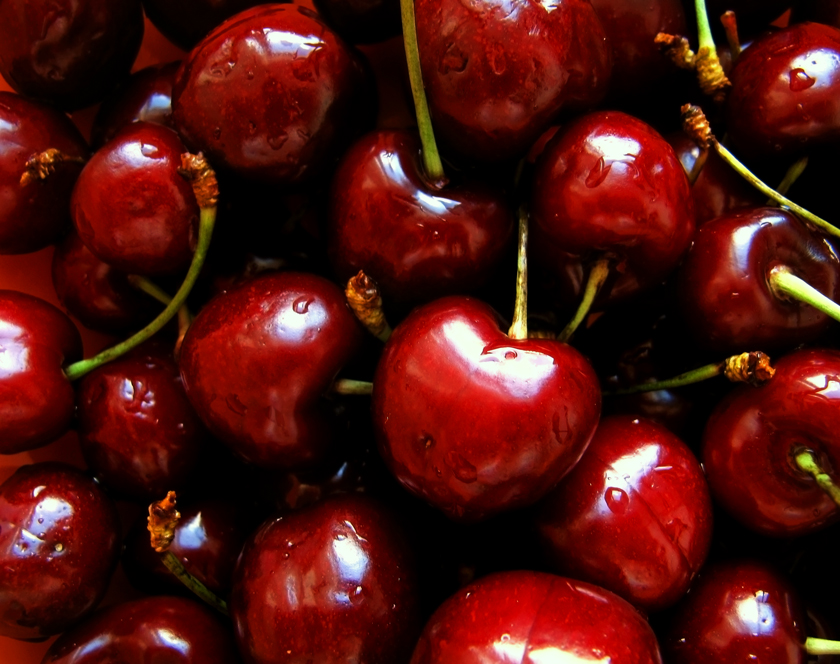Many forms of divination were practiced by ancient and medieval societies. Most forms of divination were considered “science” originally but are labelled “magic” in current practice. We laugh at some nowadays while others are still enthusiastically embraced. Some have been long forgotten while others are being rediscovered. The most common forms of divination used today are reading stars and reading cards–astrology and tarot. Until only two or three hundred years ago, everyone agreed that the various aspects of the world were so interconnected that they could not help but influence each other. What early and medieval Christians condemned was using divination as a tool to know what MUST happen, denying the possibility of free will and human agency. (The one method of divination that was ALWAYS forbidden in absolute terms was to open the Bible and point to a random verse in order to discover the will of God!) But the Church used these tools of star-reading and card-reading, as did secular society, to anticipate likely outcomes of probable actions.
What does this 3-card spread reveal about the upcoming year (2017)? A quick and simple reading would be that the 5 of Swords indicates both material loss and loss of hope early in the year, followed by new determination to study and engage in personal growth (the Page of Pentacles/Coins), resulting in a renewed sense of personal integrity and strength to confront our difficulties (Strength). Another reader might see these cards indicating not a linear series of developments but a threefold series of interconnected attitudes that continue to revolve throughout the year.
A 5-card spread reveals a slightly more complex reading for 2017. The year begins with the Knight of Wands (reversed), followed in the spring by the 8 of Pentacles/Coins, a summer dominated by the 5 of Pentacles, and concluded by The Chariot in the autumn; the 9 of Cups (reversed) is present throughout the year. The quick-and-easy explication of this spread would warn us against an immature person who is headstrong, bossy or a bully-and a risk-taker, who can do dangerous things and convince others to do dangerous things and who dominates the beginning months of the year. In reaction to this person, everyone else must work harder at self-improvement and personal growth (spring) which forces us to confront our own pride or humility in the summer and take appropriate action based on these realizations. In the autumn, this implies a struggle and an eventual, hard-won victory over enemies, obstacles, nature, the uncertainties inside each of us. But this will require confidence as well as unity of purpose and control (between each of the struggling aspects of our personalities as well as in society as a whole) and, most especially, motivation.
The 9 of Cups (reversed) in the center? The card associated with the fulfillment of all our wishes but in a quiet, muted fashion. This can serve as a motivation for all the struggles we engage in throughout the year as well as indicate the result of those struggles.
When I first dealt these two spreads, I was VERY surprised at how much they reinforce and support each other. Do any other tarot readers out there have additional interpretations to suggest?





